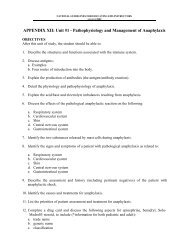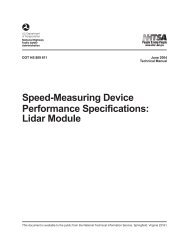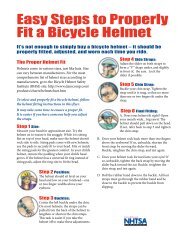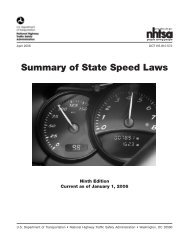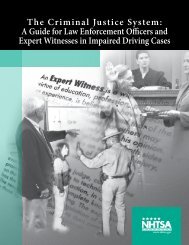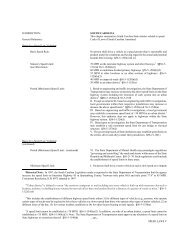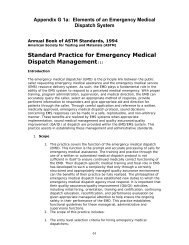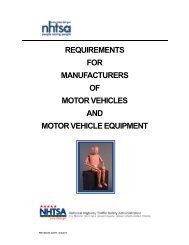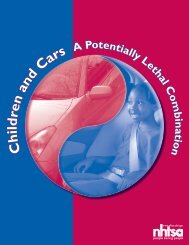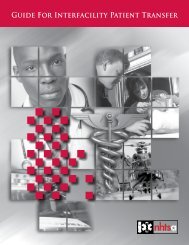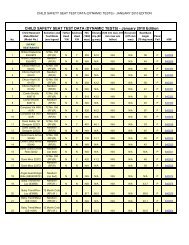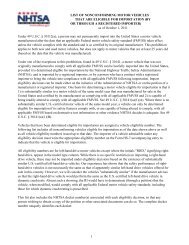Memorandum - NHTSA
Memorandum - NHTSA
Memorandum - NHTSA
You also want an ePaper? Increase the reach of your titles
YUMPU automatically turns print PDFs into web optimized ePapers that Google loves.
w-2<br />
identifying the relevant lift components and parts. The purpose of this section is to summarin<br />
each part of the agency's Final Rule and to: (1) provide a rationale or justification for each<br />
requirement in the Final Rule, particularly the objective performance measures, (2) identify<br />
where the agency's Final Rule differs from the Access Board's final guidelines, (3) delineate<br />
where lift manufacturers currently & or do not meet the specifications, and (4) identify each a 'ea<br />
where costs may be incurred by either the lift or bus manufacturers. The costs will be quantifi .:d<br />
in Section VI. Cost.<br />
Applicability - FMVSS No. 403, the equipment standard, divides the applicable safety<br />
requirements into two basic categories. The first category applies to lifts designed for installat ion<br />
on MPVs, except for motor homes, with a GVWR >4,540 kg (10,000 lbs.) and buses. This<br />
category applies to lifts for commercial and public-use vehicles including transit buses,<br />
paratransit buses, school buses and most paratransit MPVs. The second category applies mostly<br />
to lifts designed for installation on MPVs intended for personal use. There are fewer<br />
requirements for personal use vehicles, as hand rails, platform volume/size, lighting, platform<br />
marking, inner roll stop, controls illumination requirements do not apply and fatigue enduranc ;<br />
requirements have been reduced. However, there is an exception. There is an optional inner<br />
roll stop requirement for lifts designed for personal use vehicles [



